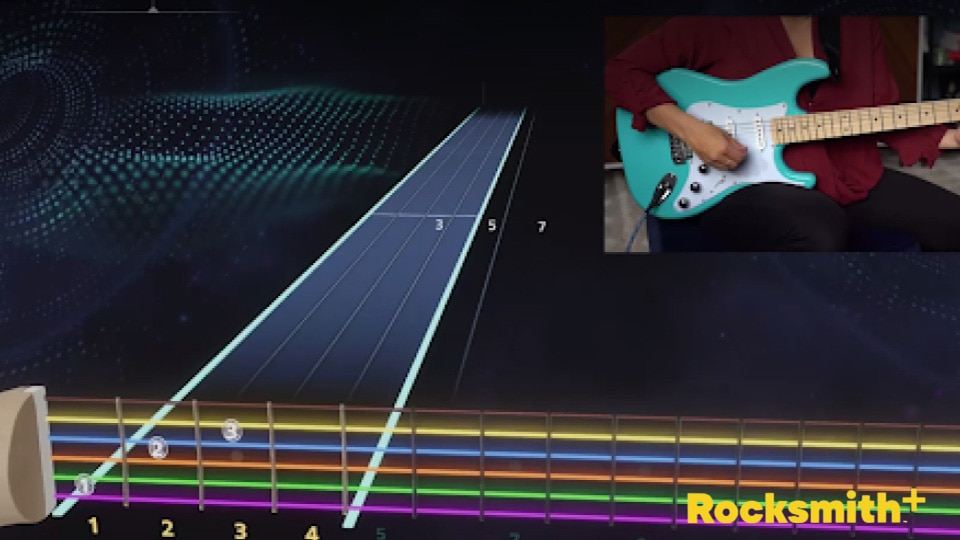The C Major chord, most commonly referred to as a C chord, renowned as the "first chord" learned by many guitar beginners, forms the backbone of numerous songs across genres, from classical to pop.
This article delves into four unique chord shapes for playing C Major, highlighting its versatility and omnipresence on the guitar fretboard. Understanding and mastering these variations not only enriches your sound but also takes your guitar playing skills to the next level.
What Is a C Major Chord?
In the music world, the C Major chord, often symbolized as "C," is one of the most fundamental and frequently used chords. Composed of three notes - C, E, and G - this triad is bright and optimistic in tonality, often evoking a sense of resolution or completion in music. But what does this mean for you as a guitar player?
Understanding and mastering multiple chord shapes of C Major across the guitar fretboard can vastly expand your playing capabilities. Different positions yield unique tonal characteristics, enabling you to adapt the chord's sound to various musical contexts. Moreover, these varying shapes act as stepping stones for improvisation and complex chord progressions, thus adding layers to your musicality.
Four Chord Shapes To Play C Major
Now that we've covered the basics, let's look at four ways you can play the C Major chord on guitar.
1. Open Position
![[RS+] How to Play C Major on Guitar 4 Different Ways SEO ARTICLE chero](http://staticctf.ubisoft.com/J3yJr34U2pZ2Ieem48Dwy9uqj5PNUQTn/7tOftFQosTWDnj3nyWYgVr/3dc218ce05b3344052ca4e37a77a7efd/unnamed__48_.jpg)
The most common and perhaps the first shape any beginner learns is the C Major in the open position.
-
Place your ring finger on the 3rd fret of the 5th string (A)
-
Middle finger on the 2nd fret of the 4th string (D)
-
Index finger on the 1st fret of the 2nd string (B)
-
Leave the 3rd and 1st strings open (G and E, respectively)
-
Avoid strumming the 6th string (low E).
This open position offers a vibrant and full sound, perfect for rhythm playing. Practice changing between open chords smoothly, and remember to press the strings firmly to avoid muffled or buzzing sounds.
2. C Barre Chord on the 3rd Fret (A Shape)
Many open chord shapes can be transferred or slid up the neck. For example, an open A chord slid up two frets creates the common B chord. Slide that chord one fret higher, and you've created a C chord.
This shape mirrors the open A Major chord but shifted up to the 3rd fret.
-
Barre all the strings at the 3rd fret with your index finger.
-
Place your middle finger on the 5th fret of the 4th string (D)
-
Place your ring finger on the 5th fret of the 3rd string (G)
-
Place your pinky on the 5th fret of the 2nd string (B).
This creates a C Major chord shape you can move up and down the neck. Barre chords can be challenging at first due to the finger strength required. Regular practice, however, will help build this strength over time.
3. C Barre Chord on the 8th Fret (E Shape)
Here we have another movable shape, this time based on the open E Major chord but at the 8th fret.
-
Barre the 8th fret with your index finger.
-
Place your middle finger on the 9th fret of the 3rd string (G)
-
Place your ring finger on the 10th fret of the 5th string (A)
-
Place your pinky on the 10th fret of the 4th string (D)
This form is quite practical for transitioning to other chords within a similar fret region, giving your performance a compact, focused feel.
4. C Major Starting At the 8th Fret
This version of the C Major chord starts at the 8th fret, offering a different voicing. To play this version:
-
Barre the high E and B strings with your index finger at the 8th fret.
-
Place your middle finger on the third string (G) at the 9th fret.
-
Place your ring finger on the fourth string (D) at the 10th fret.
With your arsenal of C Major shapes now expanded, it's essential to understand the chord's role in music. C Major gives you the feeling of a starting point that ends with a sense of completion.
Songs in the key of C Major will often start and end with a C Major chord, providing a sense of completeness. Moreover, understanding the C Major chord in multiple positions will assist in recognizing the 1-4-5 progression, a fundamental chord progression in many genres, such as blues, rock, pop, and country.
What Are Some Practical Tips and Exercises for C Major?
Now that we've explored four different ways to play the C Major chord, it's time for some practical advice:
-
Make sure your guitar is in tune before practicing. This will help you develop a keen ear for pitch accuracy.
-
Practice transitioning between the different chord shapes. A great exercise is to play a simple song you know well, but switch between different C Major shapes each time the C Major chord comes up.
-
Remember to play slowly and focus on clean sound rather than speed. Speed will come naturally with time and practice.
The Bottom Line
There you have it --- four unique ways to play the C Major chord on your guitar. Whether you're a beginner or a seasoned player looking to diversify your repertoire, mastering these shapes will bring a new depth to your playing. It's important to practice alternative shapes, and perfect your transitions over time.
Try these new C chord shapes on the more than 6,000 songs from around the world with the Rocksmith+ guitar learning platform.
Sources:
Introduction to Chords | MusicTheory.net
Root Notes in Music: How to Identify the Root of a Chord | MasterClass



